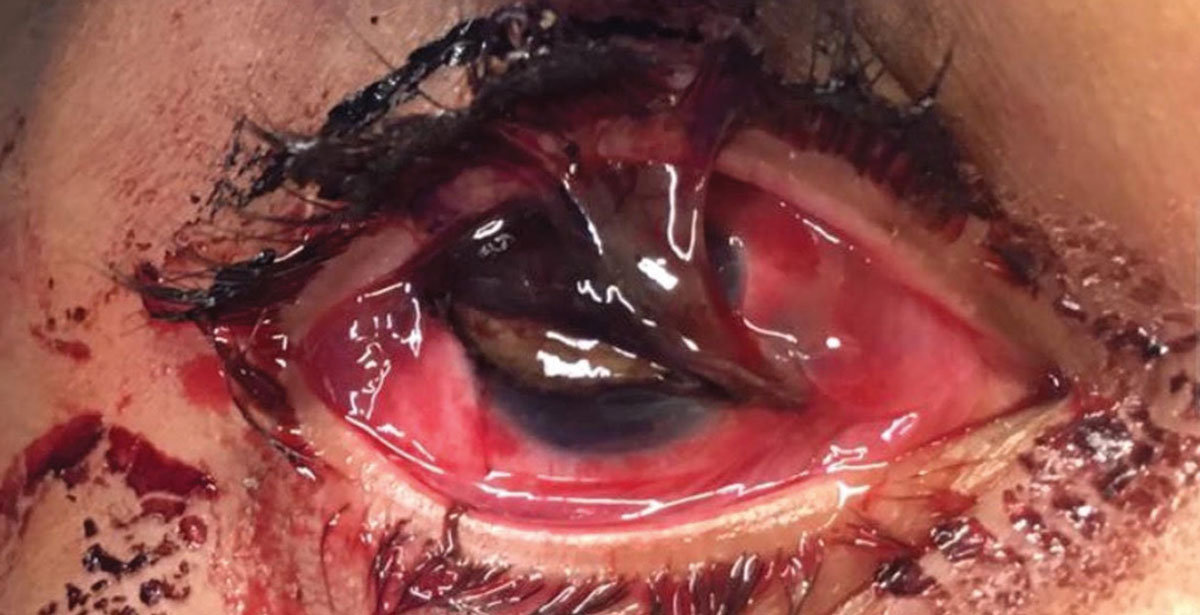 |
| Using data from the IRIS Registry, this study found that male, Black, Hispanic and younger patients have a higher incidence rate of open globe injury repair. Photo: Kristen Walton, OD. Click image to enlarge. |
Open globe injuries can cause significant visual damage, including blindness, but data on these injuries is lacking at a national level. According to the authors of a recent study, published in the Ophthalmology journal, this study was the first to document racial and ethnic disparities in both the risk of open globe injuries requiring surgical repair and the risk of poor visual outcomes within one year post-surgery. They used data from the IRIS Registry to evaluate incidence, demographic risk factors and visual acuity (VA) outcomes of open globe injuries requiring surgical repair and found that incidence is higher among males, younger patients and Black and Hispanic patients.
A total of 13,766 open globe injury repairs were identified, and models were adjusted for age, sex, race, ethnicity, US region, concurrent and subsequent surgeries and baseline VA.
The open globe injury repair risk was higher in Black and Hispanic patients and lower in Asian patients. Males between the ages of 21 and 40 and individuals over the age of 80 had the highest and lowest incidence, respectively.
Increasing age was associated with vision impairment and blindness at one year post-open globe injury repair. “This pattern is consistent with previous studies demonstrating in elderly patients a higher incidence of fall-related blunt ruptures which tend to have poorer VA prognosis compared with focal lacerations in younger patients such as from work-related projectile objects,” the authors noted. “In the IRIS Registry, males were slightly less likely to have a poor VA prognosis, both for vision impairment and legal blindness.”
It was also shown in the IRIS Registry that having additional surgeries concurrently or subsequently to open globe injury repair was associated with poor VA within one year. Specifically, having concurrent surgeries decreased the risk of vision impairment or legal blindness post-surgery by 20%, while having subsequent surgeries doubled the risk of vision impairment, the authors noted.
“We found that having concurrent surgeries was not associated with visual impairment as an outcome and was inversely associated with legal blindness,” the authors explained. “One possible explanation is that eyes with less severe injuries have a better view at the time of open globe injury repair for concurrent procedures such as a traumatic cataract removal or retinal detachment repair.”
Additionally, the study confirmed previously established risk factors associated with open globe repair for younger age and male sex and supports demographic-specific differences in high-risk injury settings.
Tomaiuolo M, Woreta FA, Li A, et al. Open globe injury repairs in the American Academy of Ophthalmology IRIS Registry 2014-2018: incidence, risk factors and visual outcomes. Ophthalmology. March 8, 2023. [Epub ahead of print]. |


